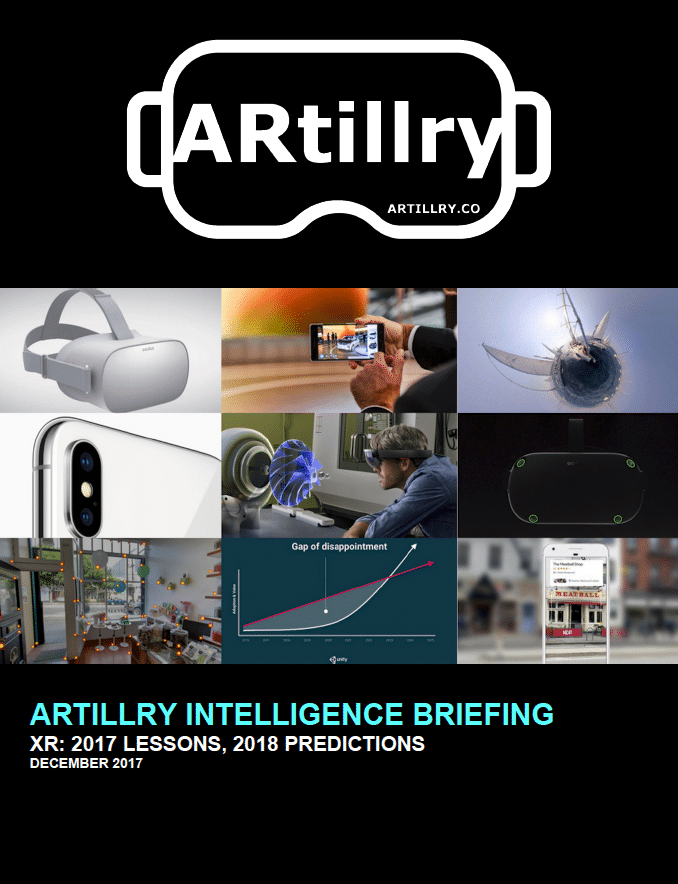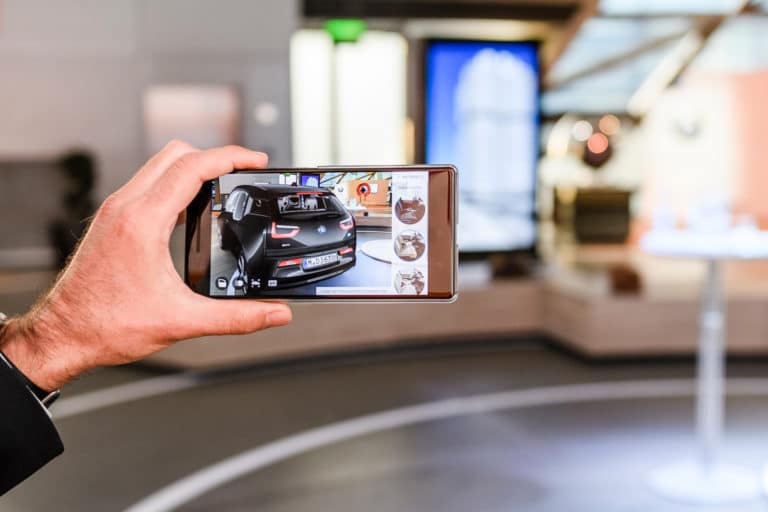
This post is adapted from ARtillry’s latest Intelligence briefing, XR: 2017 Lessons, 2018 Predictions, and specifically zeroes in on mobile AR strategies. You can preview more of the report here, or subscribe to access it in full.
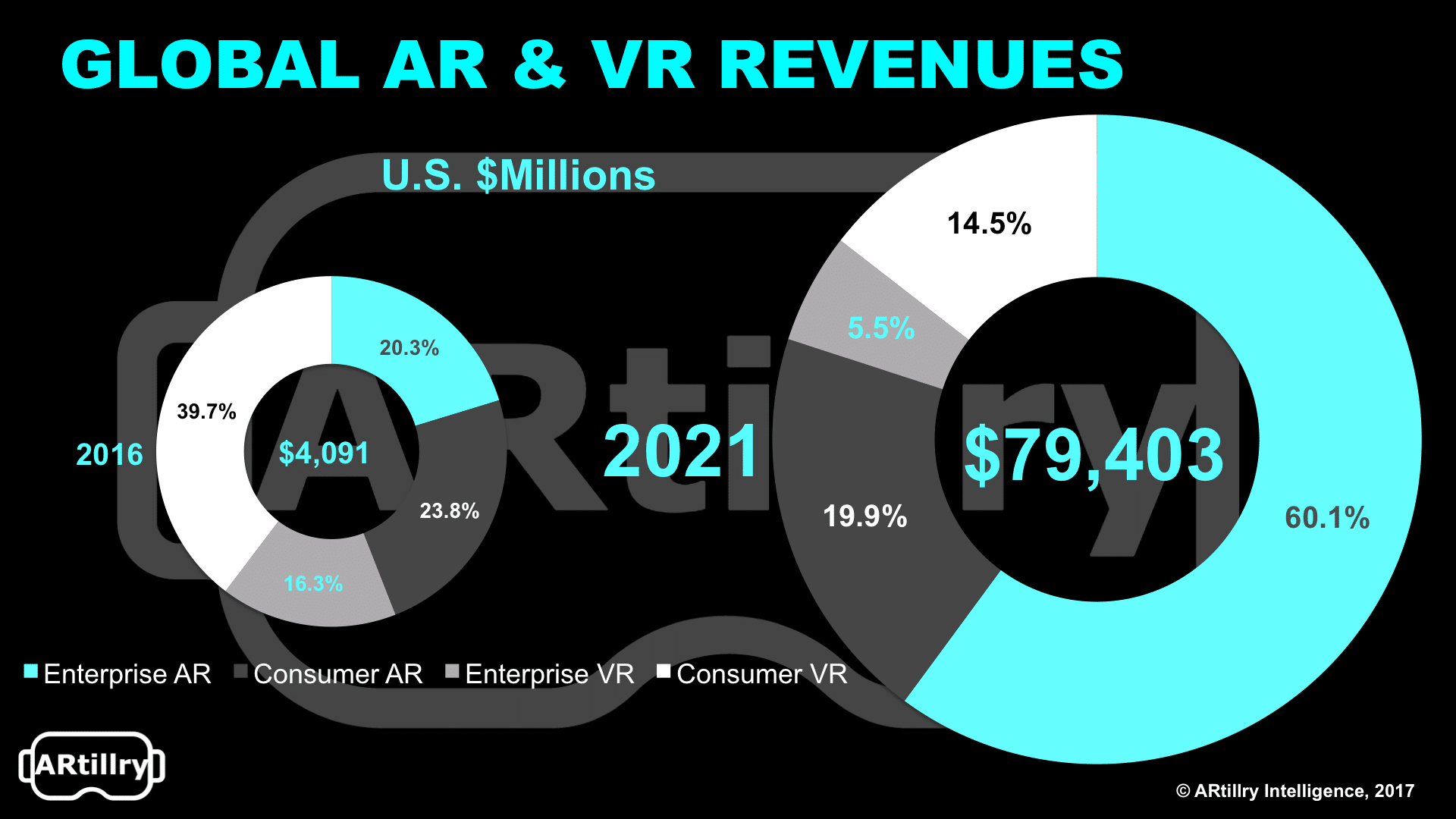
The realization of disappointing consumer VR adoption has caused XR investors, entrepreneurs and the tech media to shift focus to AR. That includes sub-sectors of AR that hold nearer-term opportunity and scale, including consumer AR (smartphone) and enterprise AR (headworn).
For the former, VR’s relatively low installed base contrasts mobile AR’s sizeable global installed base. Given that mobile AR apps operate on existing smartphones, they have greater capacity for scale. This addresses a key metric for emerging tech: total addressable market (TAM).
More specifically, mobile AR builds on the foundation of existing global smartphone penetration. That total market today is 3.2 billion units, while the smaller subset of AR-compatible smartphones is about a half-billion today, growing to 4.2 billion units by 2020, according to our projections.
Beyond sheer scale, mobile AR’s opportunity was accelerated in 2017 by Apple’s ARkit and Google’s ARCore. Both standardize underlying AR functionality and significantly lower barriers for app developers. Developers can focus instead on user experience and business models.
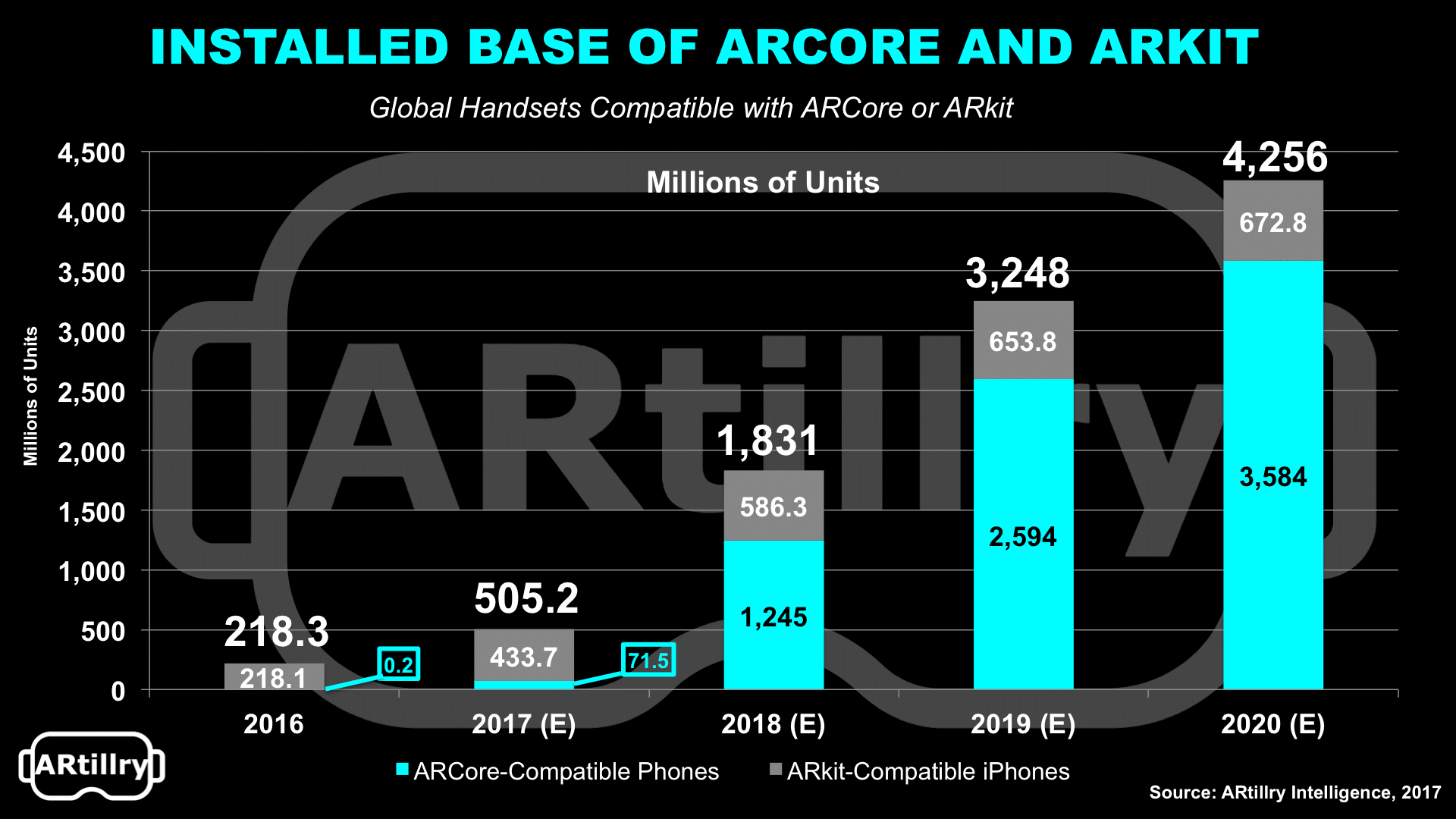
Where’s the Money?
What are those business models? Many will develop as consumer usage patterns evolve and inform revenue-generating tactics. Meanwhile, there are already signals that indicate where business models can develop. These build on established app store dynamics and app usage.
For example, in anything gaming-related (a big mobile AR category), it’s been proven that in-app purchases are often more strategic than upfront app purchases. With utilities such as mapping and navigation (likewise fitting to AR), transactional or ad support for local discovery could be strategic.
One well-established app has many of the above properties: Pokémon Go. Its revenue model is mostly in-app purchases. Similar impulse-driven revenue from competitive game mechanics could drive AR revenue, as well as Snapchat-esque social activity like sharing (paid) stickers.
Another factor that Pokémon Go revealed is the viability of location based promotions and sponsorships. That so far includes cost-per-action advertising for visits to McDonalds in Japan. ARtillry believes this will continue to evolve and gain share in Pokémon Go’s revenue mix.
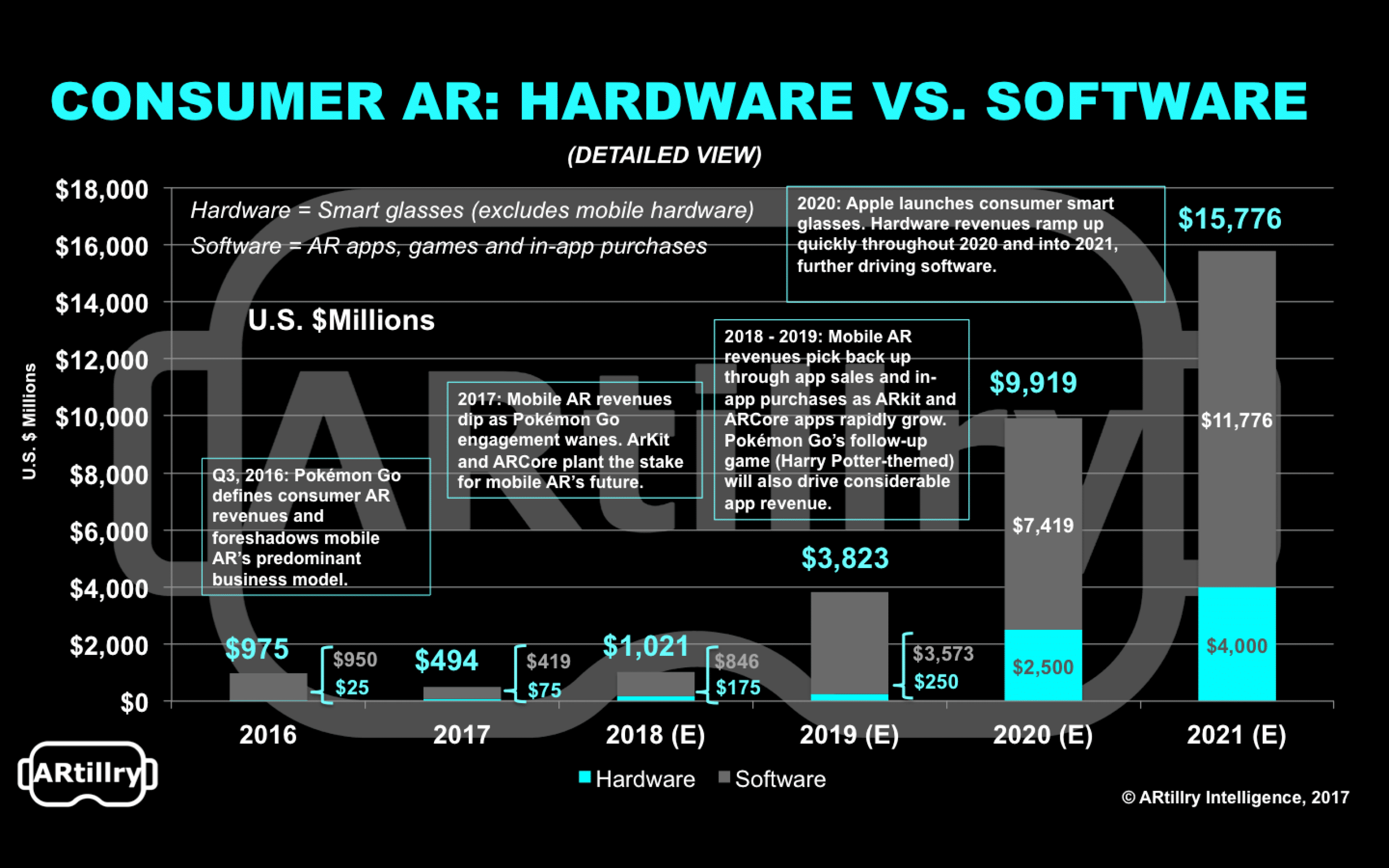
The Road to $16 Billion
Speaking of Pokemon Go, Niantic’s follow up game based on a Harry Potter theme could utilize the same architecture and game mechanics. This will provide additional signals to the marketplace about app strategies and business models that are working (and not working).
Beyond Pokémon, we’ll see revenue models that tap into mobile AR’s capacity for location-based discovery. This has natural ties to promotions that are highly trackable, such as local commerce (i.e. store visits). This is one reason why Snapchat acquired location analytics company Placed.
To frame the opportunity, consumer AR revenues were $975 million in 2016, growing to 15.8 billion by 2021 according to ARtillry’s latest forecast. This mostly includes software (apps and games) until 2020 when revenue shifts towards hardware, such as Apple’s rumored smart glasses.
To tap into that revenue, the name of the game in the near term will be driving usage and engagement. One of mobile AR’s defining characteristics so far is lackluster apps, or a novelty appeal that wears off quickly. Fixing that will (including webAR) be a key evolutionary step in 2018.
Stay tuned for part 2 of this post, exploring tactics for AR app engagement. Additional depth is provided in the full report.
For a deeper dive on AR & VR insights, see ARtillry’s new intelligence subscription, and sign up for the free ARtillry Weekly newsletter.
Disclosure: ARtillry has no financial stake in the companies mentioned in this post, nor received payment for its production. Disclosure and ethics policy can be seen here.

